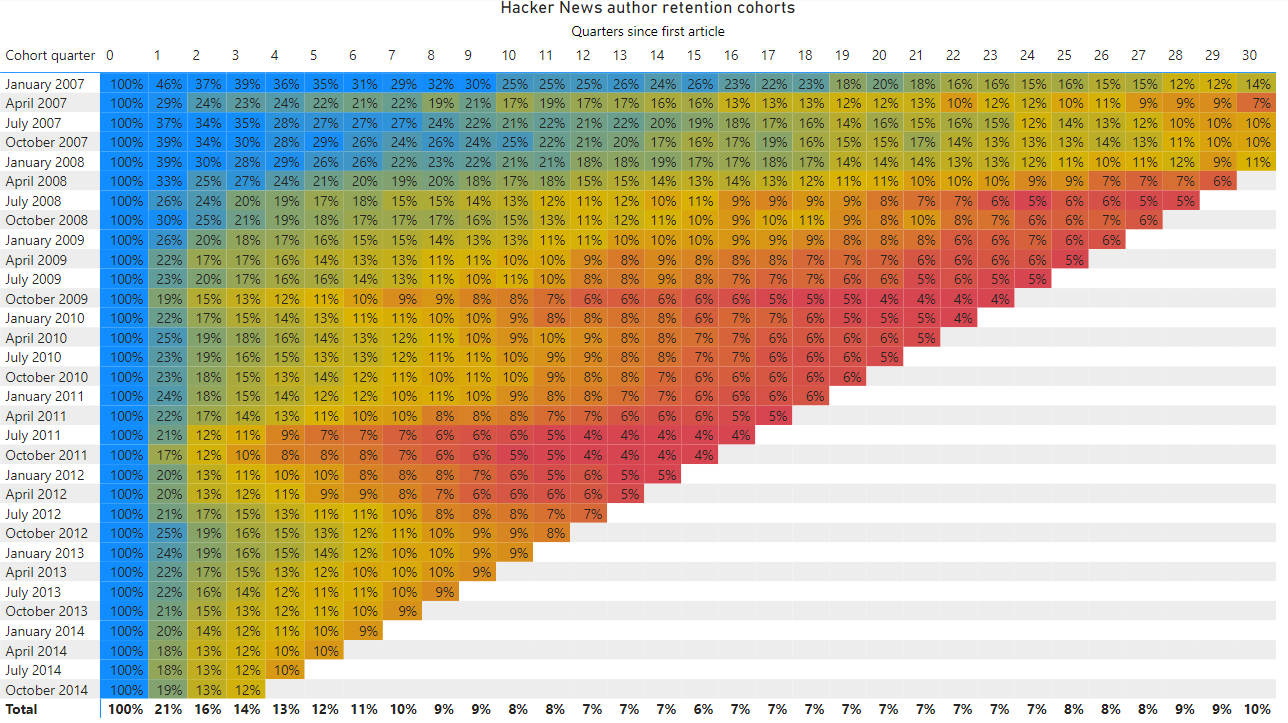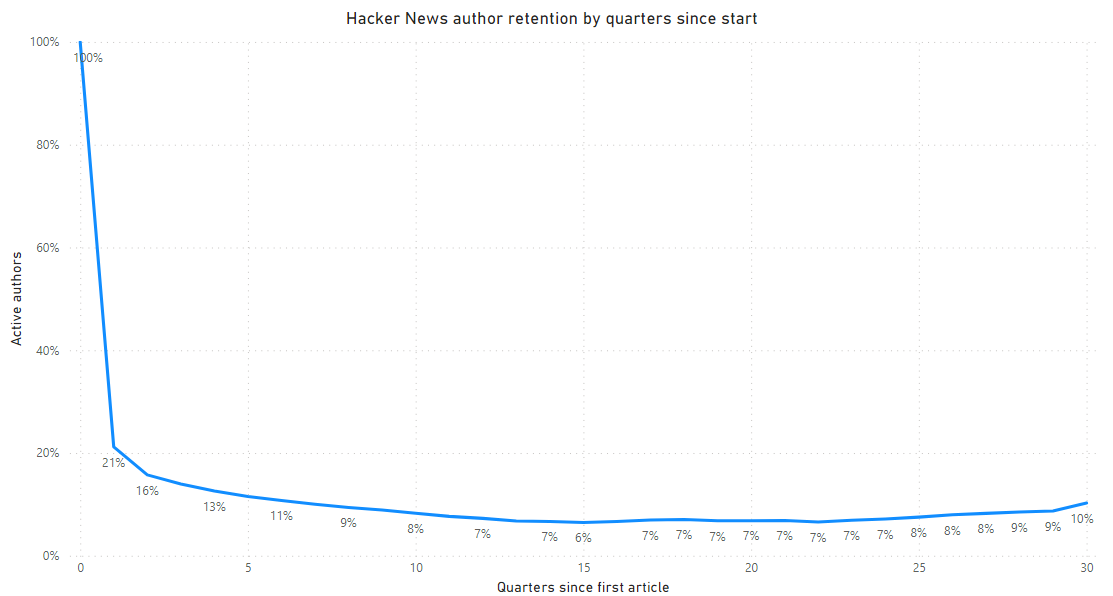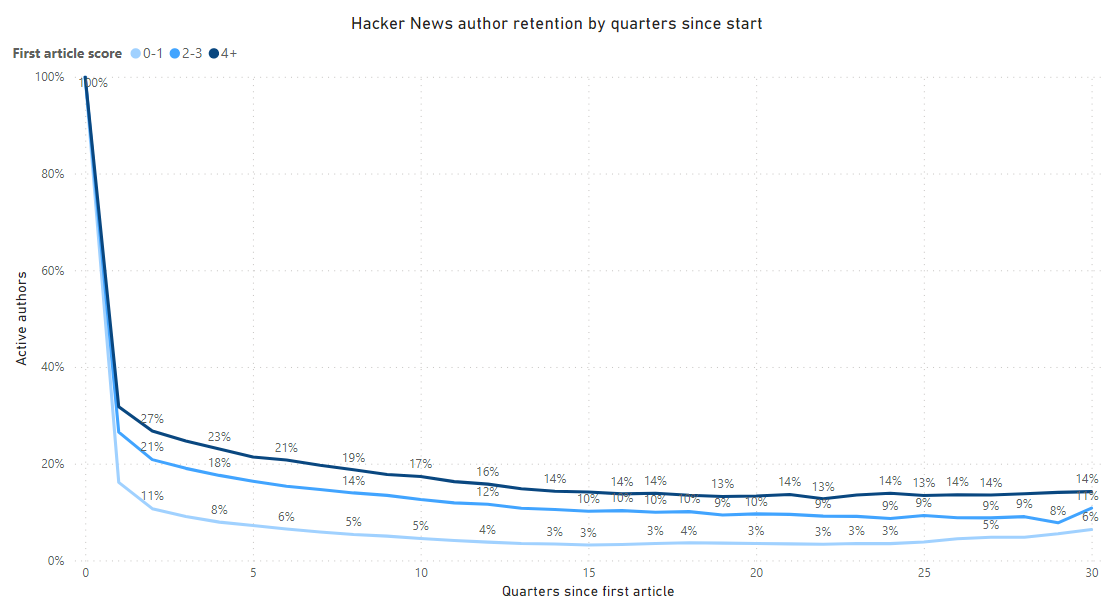
Analytics ABC
Retention cohorts
Understanding retention cohorts and using them effectively

Understanding retention cohorts and using them effectively
Retention cohorts are a valuable analytical tool for understanding entity behavior over time. They help provide insights into the effectiveness of marketing campaigns, product changes, or other business initiatives. To have effective communication throughout the rest of the article, let’s define core concepts first.
A cohort is a group of entities that share a common characteristic or experience during a specific time frame. In the context of retention, cohorts are groups of customers or users who make their first interaction or purchase within a given time frame, often referred to as the "cohort period."
It defines the duration for which you want to monitor the cohort’s engagement or activity after they have performed a specific initial action, such as signing up for a service, making a first purchase, or downloading an app.
Hacker News is a social news website focusing on computer science and entrepreneurship. Retaining productive authors over time is vital for maintaining a steady stream of fresh and engaging content as well as building a healthy community of readers around the platform. By understanding author retention, the platform can recognize and incentivize the most valuable contributors. Let’s look at the author retention cohort below.

This perspective has a significant drawback, as it simplifies user categorization into a single, unhelpful batch: the timing of the first article. Understanding that older authors tend to stick around more isn't particularly valuable because you can't magically make more of them sign up in the past month. Additionally, a decline in author retention doesn't automatically imply that reverting to an older version of your product or business process is the right solution.
Segmenting our cohorts is the right approach to figuring out what to do next.
Just as authors who started posting last month are different from those who started today, authors who write about crypto might be different from those who write about analytics. Similarly, some users might find the platform through an ad while others might sign up after reading an article. Some folks probably enter their work email addresses, while others use a Gmail account. And then there are geographical differences.
The Hacker News dataset on BigQuery contains limited options for author segmentation, therefore we have to innovate. Articles on HN can be scored by the readers, which could be a valuable segmentation angle. Getting the first article rated highly, might lead to better author retention down the line. This segmentation is applied to the overall retention rate in the image below.

From the visualization, it is clear that a high initial article score leads to better retention. This is a good signal for the product team to innovate in this direction. A few ideas to be tested come to mind:
In this article, I have provided a glimpse into cohort analysis. Explained main concepts and provided instructions on how to read and interpret it. The main point with cohort analysis (as with any analytical tool) is to use it proactively to make informed decisions, evaluate the effectiveness of those decisions, and course correct accordingly.
We got more in Analytics ABC series
Only important news and sales. Never spam.